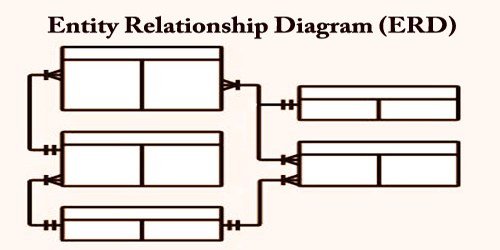Entity Relationship Diagram, otherwise called ERD, ER Diagram, or ER model, is a sort of primary graph for use in information base plan. It is a kind of flowchart that shows how "substances, for example, individuals, items, or ideas identify with one another inside a framework. An ERD contains various images and connectors that imagine two significant data The significant substances inside the framework scope, and the between connections among these elements.
Entity Relationship Diagrams are almost every now and again want to plan or investigate social information bases inside the fields of programming, business data frameworks, training, and examination. Likewise, alluded to as ERD's or ER Models, they utilize a delineated arrangement of images like square shapes, precious stones, ovals, and associating lines to portray the interconnectedness of elements, connections, and their characteristics. They reflect linguistic structure, with elements as things and connections as action words.
While ERD are generally created for planning social inform

ation bases as far as idea perception and as far as actual information base plan, there are then again different circumstances when ER outlines can help. An ER Diagram contains elements, properties, and connections.
Entity Relationship charts are related with framework graphs (DSDs), which focus on the connections of components inside elements instead of connections between elements themselves. Entity Relationships graphs are additionally regularly utilized related to information stream charts (DFDs), which guide out the progression of information for cycles or frameworks.
There are three fundamental components in ER-Diagrams:
• Elements are the "things" for which we need to store data. An element is an individual, spot, thing or occasion.
• Characteristics are the information we need to gather for an element.
• Connections portray the relations between the elements.
Emergency room Diagrams are made out of elements, connections and characteristics. They likewise portray cardinality, which characterizes connections as far as numbers. Here's a glossary:-
Substance – An ERD element is something quantifiable or idea inside a framework, for example, an individual/job (for example Understudy), object (for example Receipt), idea (for example profile) or occasion (for example Exchange) (note: In ERD, the expression "element" is frequently utilized rather than "table", yet they are the equivalent). While deciding elements, consider them things. In ER models, a substance is appeared as an adjusted square shape, with its name on top and its ascribes recorded in the body of the element shape.
Substance Attributes – Also known as a section, a trait is a property or normal for the element that holds it. A characteristic has a name that depicts the property and a sort that portrays the sort of quality it is, for example, varchar for a string, and int for whole number. At the point when an ERD is drawn for actual information base turn of events, it is essential to guarantee the utilization of types that are upheld by the objective RDBMS.
Element keys – Refers to a characteristic that exceptionally characterizes a substance in an element set. Element keys can be super, applicant, or essential.